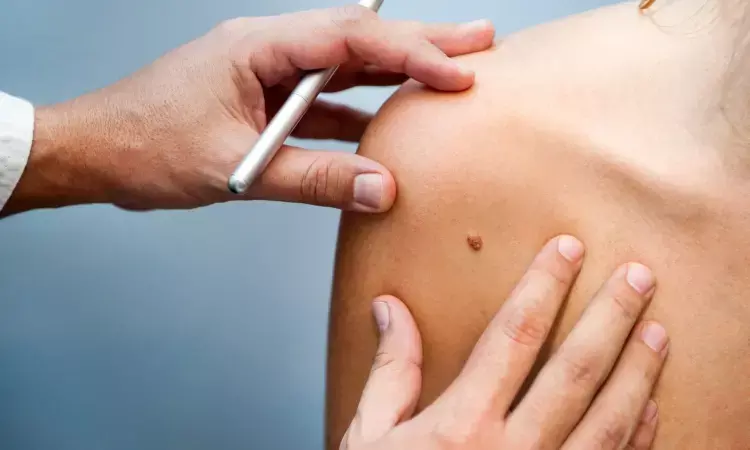- Home
- Medical news & Guidelines
- Anesthesiology
- Cardiology and CTVS
- Critical Care
- Dentistry
- Dermatology
- Diabetes and Endocrinology
- ENT
- Gastroenterology
- Medicine
- Nephrology
- Neurology
- Obstretics-Gynaecology
- Oncology
- Ophthalmology
- Orthopaedics
- Pediatrics-Neonatology
- Psychiatry
- Pulmonology
- Radiology
- Surgery
- Urology
- Laboratory Medicine
- Diet
- Nursing
- Paramedical
- Physiotherapy
- Health news
- Fact Check
- Bone Health Fact Check
- Brain Health Fact Check
- Cancer Related Fact Check
- Child Care Fact Check
- Dental and oral health fact check
- Diabetes and metabolic health fact check
- Diet and Nutrition Fact Check
- Eye and ENT Care Fact Check
- Fitness fact check
- Gut health fact check
- Heart health fact check
- Kidney health fact check
- Medical education fact check
- Men's health fact check
- Respiratory fact check
- Skin and hair care fact check
- Vaccine and Immunization fact check
- Women's health fact check
- AYUSH
- State News
- Andaman and Nicobar Islands
- Andhra Pradesh
- Arunachal Pradesh
- Assam
- Bihar
- Chandigarh
- Chattisgarh
- Dadra and Nagar Haveli
- Daman and Diu
- Delhi
- Goa
- Gujarat
- Haryana
- Himachal Pradesh
- Jammu & Kashmir
- Jharkhand
- Karnataka
- Kerala
- Ladakh
- Lakshadweep
- Madhya Pradesh
- Maharashtra
- Manipur
- Meghalaya
- Mizoram
- Nagaland
- Odisha
- Puducherry
- Punjab
- Rajasthan
- Sikkim
- Tamil Nadu
- Telangana
- Tripura
- Uttar Pradesh
- Uttrakhand
- West Bengal
- Medical Education
- Industry
40 percent Hydrogen peroxide cost-effective treatment option for seborrheic keratoses: Study

Manipal, India: Hydrogen peroxide (H2 O2 ) at 30% can be used as a chemical cauterant for seborrheic keratoses (SKs) with minimal side effects, reveals a recent study published in the International Journal of Dermatology.
Seborrheic keratoses are common benign skin lesions that affect people from middle age to the elderly. It commonly occurs on the body's exposed areas and can be a cause of cosmetic concern.
40% H2 O2 was approved by the US Food and Drug Administration (USFDA) in 2019 for the treatment of raised SKs. H2O2 at the concentration of 40% is difficult to procure. Further, H202 action and utility at 30% are still not explored. As at 30% concentration, hydrogen peroxide can serve as a relatively inexpensive modality of SKs treatment, Manasa Narayan Kayarkatte and Punya Suvarna from Manipal Academy of Higher Education (MAHE), Manipal, India, aimed to evaluate the efficacy and side effects of 30% H2O2 as a chemical cauterant in SKs.
For this purpose, the researchers used 30% H2O2 methodically for the treatment of SKs. They postoperatively assessed the lesion thickness, patient satisfaction, and side effects like itching, edema, burning, crusting, erosion, vesiculation, ulceration, and pigmentary changes.
Using a toothpick, H2 O2 was gently applied over the lesions for 20 seconds and the surrounding skin was protected by using petroleum jelly. Patients were followed at weekly intervals with a repeated application at 2 weeks for persistent lesions.
The study revealed the following findings:
- Complete clearance was noted in 25 (49%) lesions, after a single session.
- Five (9%) lesions responded poorly. Patient satisfaction was excellent with 34 (66.7%) lesions.
- Side effects noted were burning, pruritus, erythema, edema, and crusting. However, none of them was severe. Dryness, vesiculation, and scarring were reported by none.
To conclude, H2O2 30% can be used as a chemical cauterant with minimal side effects.
Reference:
The study titled, "Utility of 30% hydrogen peroxide in the treatment of seborrheic keratosis," was published in the International Journal of Dermatology.
Dr Kamal Kant Kohli-MBBS, DTCD- a chest specialist with more than 30 years of practice and a flair for writing clinical articles, Dr Kamal Kant Kohli joined Medical Dialogues as a Chief Editor of Medical News. Besides writing articles, as an editor, he proofreads and verifies all the medical content published on Medical Dialogues including those coming from journals, studies,medical conferences,guidelines etc. Email: drkohli@medicaldialogues.in. Contact no. 011-43720751


